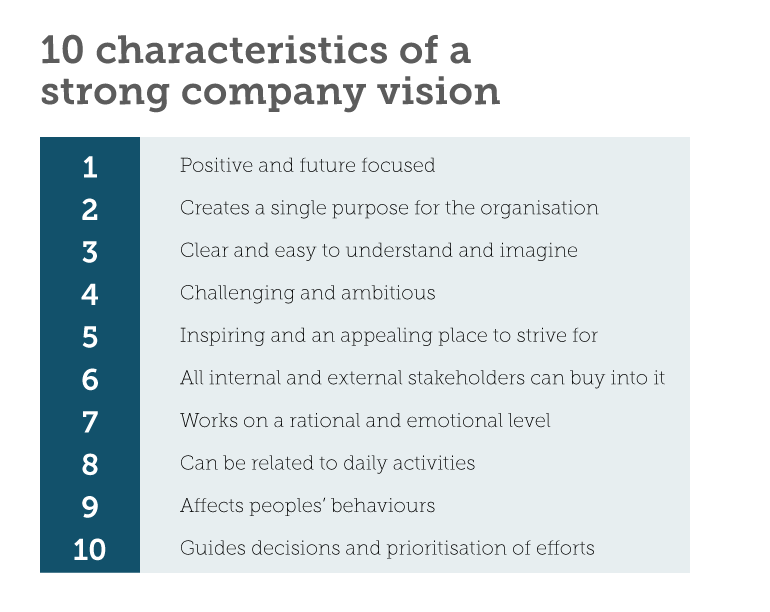In turbulent times such as these, its imperative to have a company vision that is clear and accessible to all if the direction of the business is to withstand the ebbs and flows of uncertain trading conditions.
With a clear overriding vision, people can take fast and decisive action without the need to spend time checking with a senior executive every time a decision needs to be made. It sets the scene for a more stable working environment where staff can feel confident about their direction.
20th Century Visions
Vision and mission statements became popular concepts and boardroom buzz words towards the end of the last century, but in most cases, they became bland, meaningless statements that made little difference to most employees.
Vision statements such as:
“To be a World Class Organisation in our products, processes, people and performance”
Or
“To acquire and maintain global leadership position in chosen areas of businesses and to continuously achieve a return on invested capital of at least 10 points higher than the cost of capital.”
Do not inspire people, and yes, these are genuine vision statements!
Such statements hung on office walls yet were hardly ever noticed or they simply disappeared into drawers somewhere, never to be seen again.
Organisations would typically go on to define corporate objectives which were split into individual targets for each area against which performance was monitored, and further split again into team and individual goals.
The ideology had merit, however the link back to the organisation’s overall vision would quickly be lost in the process, with the result that only a few senior executives (if any) had the overall vision as their ‘guiding star’. The rest of the organisation would be influenced by their local goals and measures even if the world around them changed in the meantime, making their current path irrelevant.
For a vision to become a true guiding star for all staff, it needs to be engaging, current and able to affect people’s behaviour and daily decisions.
Telling a story
The purpose of an engaging vision in times of uncertainty and complexity is to set a clear statement about where the organisation is heading and through this, guide the decisions and priorities of managers and staff.
When we work with businesses, large or small, to develop their vision, we have a checklist of ten characteristics of a strong vision that we use to measure the final result against.

To meet these 10 characteristics, a short bland vision statement is not nearly enough. To engage and inspire, managers need to be able to ‘paint the picture’ for all staff, describing the destination and the journey for getting there. They need to be able to relate the vision to daily activities and choices.
From vision to action
So, here’s how we go about inspiring senior teams to create their vision, and turn it into a workable plan. We encourage them to create images and illustrations for the destination. They don’t need to be artistically gifted, but they do need to be creative. We want to minimise the amount of words and numbers used.
If for example they have an ambition to be twice the size in 5 years, we will explore how the business will look like then, e.g.
- How many customers, customer mix and geographical spread?
- How many people and what skill mix will they have?
- Where will offices and manufacturing sites be located?
- Which products and services will they deliver?
- What accolades and awards will they have? etc.
We will also look at the turnover, profit and other key success measures by that 5-year point.
This is always an exciting and challenging exercise, typically with the senior team, and may take place over several sessions.
Once the vision is clear, it is then important to show the journey with the steps that need to happen to get there. The vision is typically split into annual milestones that take the business from the situation today to the end point of the 5-year picture. The first year may then again be split into quarterly or monthly targets and milestones.
With this vision and journey containing mostly images with only a few words and numbers, the leadership team can now start to share the story, using the power of storytelling to engage staff at all levels and locations. Local team leaders can adapt their presentations to talk about how their team and individual members fit into the picture, how it will affect them and how they can contribute.
This is the 21st Century way of creating a compelling vision that will engage and align staff towards a common goal in an agile and responsive way.
Without direction, we end up adrift, heading towards the place we don’t necessarily want to be. That’s why I advocate a clear company vision for all of my clients’ organisations, and why, when one is put in place, I see just how motivated and driven it makes the teams that work there.
Back to News & Blogs Overview
